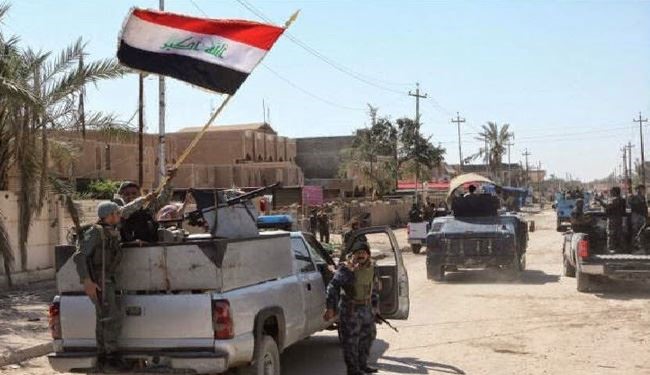Iraqi Army Starts Military Operations to Regain Ramadi

The Iraqi army backed by popular forces started a new round of operations from three different directions to take full control over the city of Ramadi in Anbar province on Friday.
The Iraqi army and the popular forces launched new offensives from the West, Southwest and North against the terrorists’ positions in the center of the city of Ramadi on Friday.
The Iraqi forces, meantime, purged terrorists from several areas in the Western suburban areas of Ramadi city.
The Iraqi army and popular forces entered Ramadi after seizing back Al-Warar military base near the city.
On Monday, a local military commander announced that Iraq’s Joint Armed Forces were preparing to launch heavy attacks on the Takfiri terrorists’ military positions in Ramadi after all the residents of the capital of Anbar province evacuate the city.
“The Iraqi joint forces have halted their attacks on the militants’ positions in Ramadi for the fear of civilian casualties as all residents of Ramadi have not managed to evacuate the city as yet,” Iraqi Volunteer Forces Spokesman Ryan al-Kaldani told FNA.
He said that the Iraqi forces are deeply concerned about the people’s lives as they have nothing to do with the ISIL.
Kaldani underlined that the Iraqi forces continue to chase the ISIL militants and have blocked the terrorists’ supply lines in different cities of Anbar province, especially Fallujah.
“The Iraqi joint forces have taken control of many surrounding areas of Ramadi which paves the way for winning back the city itself,” he added.
On Saturday, the Iraqi Joint Forces Command Center announced that the army units backed by the volunteer forces had purged 95 percent of Ramadi outskirts of Takfiri terrorists.
“Only five percent of Ramadi (region) has remained to be cleaned of Takfiri terrorists as the army and volunteer forces have cleared most of the city,” Spokesman of Iraqi Joint Forces Brigadier General Yahya Rasoul announced.
Also on Saturday, field sources said that the Iraqi army and the Hashd al-Shaabi forces had won back a strategic area in Ramadi from the control of the terrorists.
According to the sources, the Iraqi forces took back the Albu Maraie area in Ramadi from the Takfiri militants.
Earlier reports said the Iraqi security forces launched a multi-pronged attack to retake Ramadi, tightening the military blockade around the city from four sides and setting the stage for a deeper assault.
The Iraqi forces won control over most parts of the Western city of Ramadi during the past weeks, several months after it was occupied by the ISIL terrorists in May.
The Joint Operations Center in Iraq in a message, asked the residents of Ramadi to evacuate the city as soon as possible to remain safe from the heavy assaults of the army against the terrorists.
Sabah Karhout, the head of the council of al-Anbar province’s governor-general office, said on Thursday that the army, police and anti-terrorism forces have been deployed in four cross points of Ramadi to launch massive attacks on ISIL positions from all directions; FNA reported.







